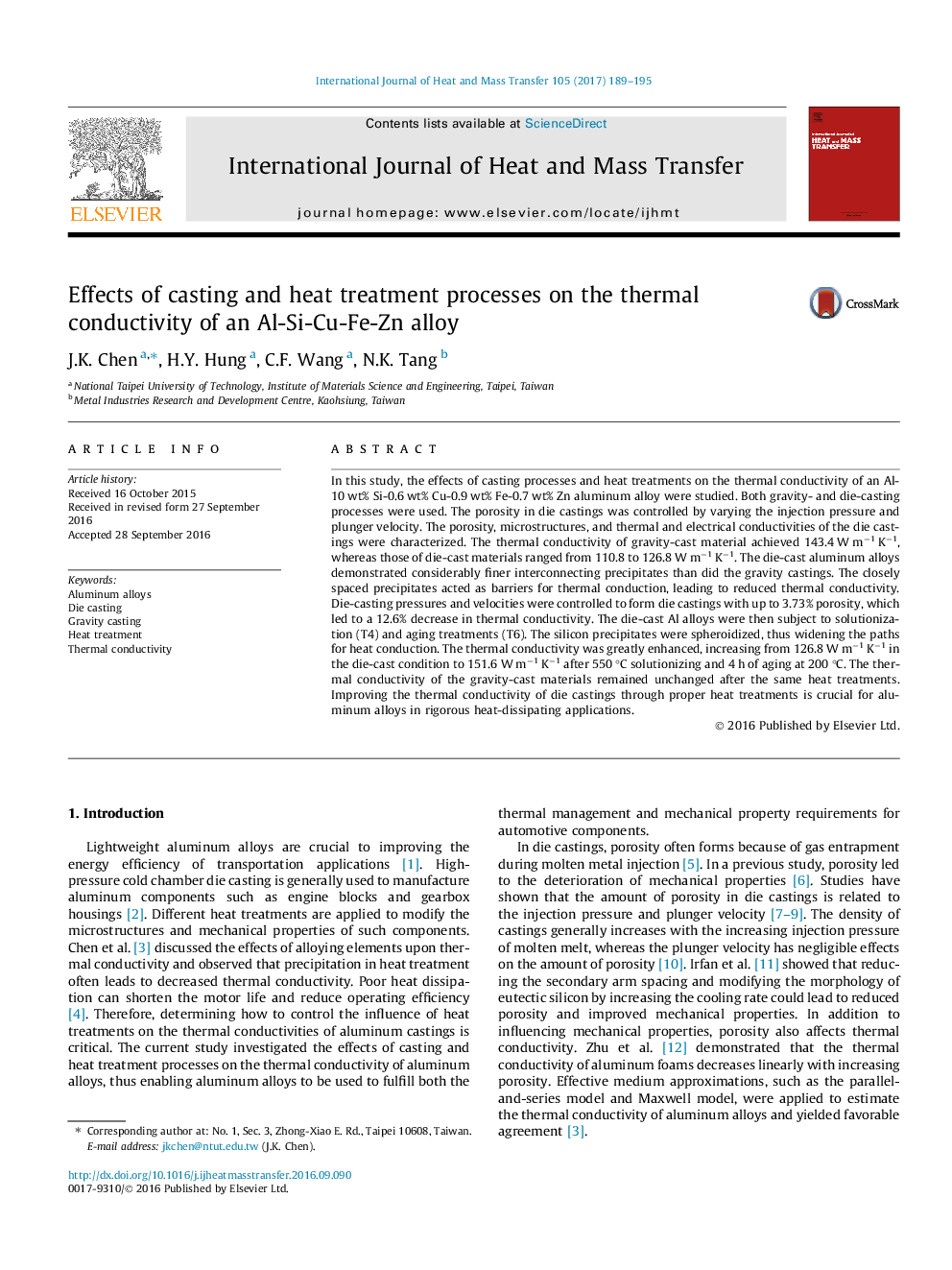| Article ID | Journal | Published Year | Pages | File Type |
|---|---|---|---|---|
| 4994682 | International Journal of Heat and Mass Transfer | 2017 | 7 Pages |
Abstract
In this study, the effects of casting processes and heat treatments on the thermal conductivity of an Al-10 wt% Si-0.6 wt% Cu-0.9 wt% Fe-0.7 wt% Zn aluminum alloy were studied. Both gravity- and die-casting processes were used. The porosity in die castings was controlled by varying the injection pressure and plunger velocity. The porosity, microstructures, and thermal and electrical conductivities of the die castings were characterized. The thermal conductivity of gravity-cast material achieved 143.4 W mâ1 Kâ1, whereas those of die-cast materials ranged from 110.8 to 126.8 W mâ1 Kâ1. The die-cast aluminum alloys demonstrated considerably finer interconnecting precipitates than did the gravity castings. The closely spaced precipitates acted as barriers for thermal conduction, leading to reduced thermal conductivity. Die-casting pressures and velocities were controlled to form die castings with up to 3.73% porosity, which led to a 12.6% decrease in thermal conductivity. The die-cast Al alloys were then subject to solutionization (T4) and aging treatments (T6). The silicon precipitates were spheroidized, thus widening the paths for heat conduction. The thermal conductivity was greatly enhanced, increasing from 126.8 W mâ1 Kâ1 in the die-cast condition to 151.6 W mâ1 Kâ1 after 550 °C solutionizing and 4 h of aging at 200 °C. The thermal conductivity of the gravity-cast materials remained unchanged after the same heat treatments. Improving the thermal conductivity of die castings through proper heat treatments is crucial for aluminum alloys in rigorous heat-dissipating applications.
Related Topics
Physical Sciences and Engineering
Chemical Engineering
Fluid Flow and Transfer Processes
Authors
J.K. Chen, H.Y. Hung, C.F. Wang, N.K. Tang,
